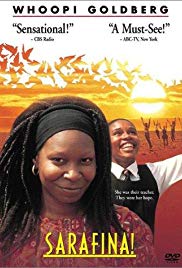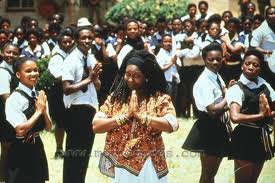REBELLION
1. Assume that apartheid still exists and is still imposed on black South Africans by repressive means such as torture, killings, arbitrary imprisonment, etc. Assume that you were an Afrikaner who was born and raised in South Africa. Assume that in 1976 all your family, friends and acquaintances believed in apartheid and the repressive measures necessary to support it. Assume that you became aware of the human rights abuses required to maintain the government and the apartheid system. Based on these hypothetical facts, what would you have done about apartheid and what do you expect would have happened to you?
Suggested Response:
These are the circumstances faced by the main character in A Dry White Season.
2. Can rocks prevail against guns? Can peaceful protest prevail against guns?
Suggested Response:
It is theoretically possible for rocks to prevail against guns, if there are enough rock throwers and few with guns. However, we don’t know of any circumstances in which there have been so few guns that rocks alone prevailed. Many revolutions of the 20th century demonstrated that it isn’t rocks (or even guns or suicide bombers) which are the most successful tactics to liberate a people. Nonviolent mass actions, including economic measures such as strikes and boycotts, are the most effective way for a people to resist an oppressive government. See A Force More Powerful.
3. What would have been Mahatma Gandhi’s solution to apartheid?
Suggested Response:
Nonviolent mass action. See Gandhi. Then follow up with the following question: “Do you think that nonviolent mass action would have worked against apartheid?” The answer is yes, if done on a massive scale. What brought apartheid down were internal boycotts and international economic sanctions. A boycott is a form of mass action and it is nonviolent.
4. Was the schoolmaster correct when he said that the only hope for the children was education?
Suggested Response:
Yes, because with education comes an open mind and educated mind. These are necessary to find creative solutions to the problems faced by a society.
5. When Sarafina finds the gun in teacher Masambuca’s house, Mrs. Masambuca says “I hate the killing. I hate the violence. But I cannot stand aside and let others die for me. I will fight, too. I can’t kill. Don’t ask me to kill. It’s the same old argument. What if they come for you; come to the door, kick it in. Do you reach for the gun? Do you shoot? Do I? I don’t know. I don’t know.” How would you answer these questions?
Suggested Response:
When oppressed people, such as the people of Soweto, fight violence with violence it only makes the situation worse. It was not massive violence that ended apartheid, it was nonviolent mass action (internal boycotts), meetings, demonstrations, and international sanctions. Reaching for a gun and shooting at the person sent there to hurt you usually does not fix the situation.
6. Was Mrs. Masambuca right to hide her husband’s gun?
Suggested Response:
No, if the gun had been discovered by the authorities, she would have been jailed and tortured, although this happened anyway.
HUMAN RIGHTS
7. List the human rights abuses shown in this film.
Suggested Response:
There were many, including torture, physical attack, random arrest, random killing, and searches without a warrant.



